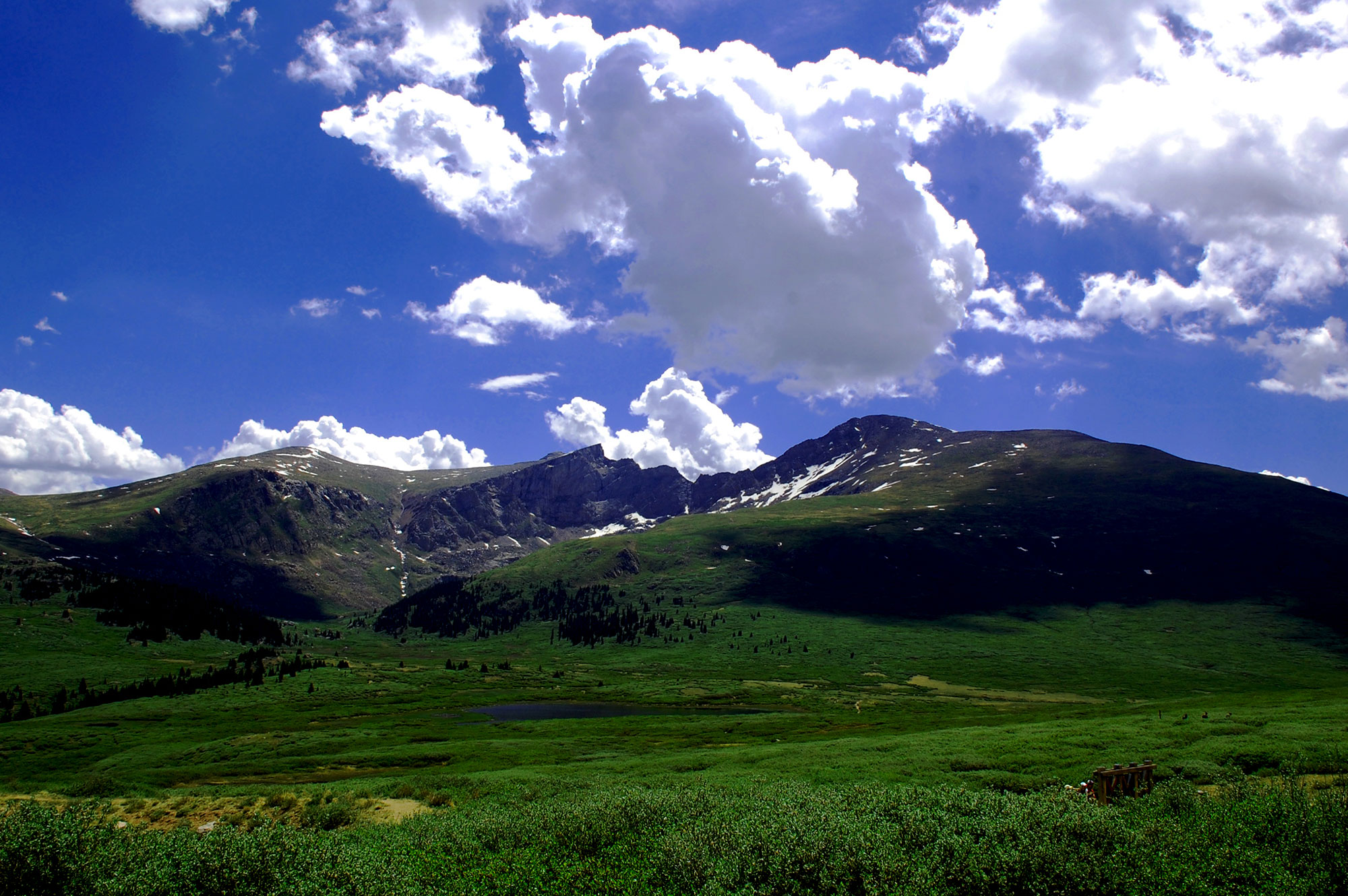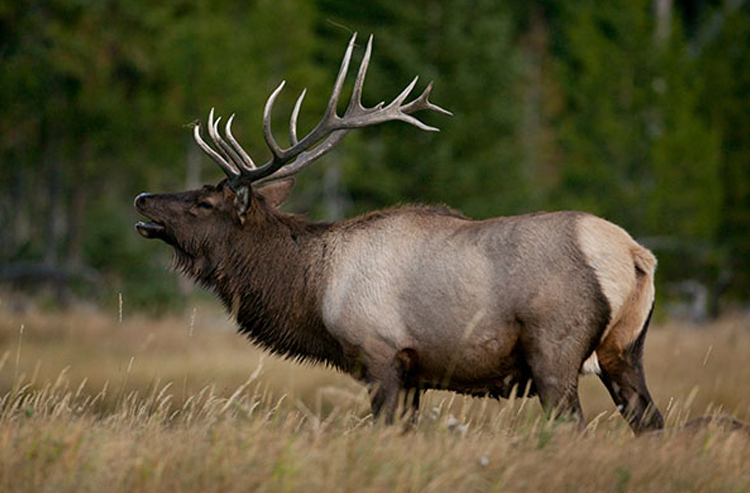The wapiti, or elk, is the largest of Colorado’s native deer (seven to nine feet long, with a four to six-inch tail, and weighing 450 – 900 pounds). Commonly called “elk” in this country, wapiti is a preferred name because elsewhere in the world “elk” refers to the animal we call moose.
Our wapiti is a Holarctic species, which means it occurs in both North America and Eurasia; in Eurasia, it is known as the red deer. Whatever we choose to call it, this is an impressive and important animal in Colorado. The wapiti is brownish tan in color, with a yellowish rump and a dark mane on the shoulders. Mature males have large antlers, typically with six tines branching from each beam.
Range
Wapiti range throughout mountainous parts of the state, foraging in meadows and alpine tundra. Wapiti are gregarious animals, sometimes moving in herds of several hundred individuals.
Habitat
Before the arrival of European settlers, wapiti ranged nearly throughout the area that is now Colorado, including the eastern plains. Market hunting nearly drove Coloradoan elk to extinction. By 1910 only a few hundred elk remained, restoration of the herds was helped by transplanting elk from Yellowstone.

Diet
Wapiti are grazers; that is, they eat mostly grasses, when available. In summer, the diet mainly being 80 to 90 percent grasses. Bark and twigs of trees and shrubs may contribute half the winter diet. Wapiti sometimes congregates at haystacks in severe weather.
Reproduction
Mating is over by mid-October. Usually, a single, obscurely spotted calf is born in May or June, after a gestation period of 8 1/2 months. Females breed first at 3 years of age, males about four. Hunters harvest 40,000 to 50,000 wapiti in Colorado each year, the largest number of any state. In the fall rut, bulls spar for dominance and possession of harems of several cows.
